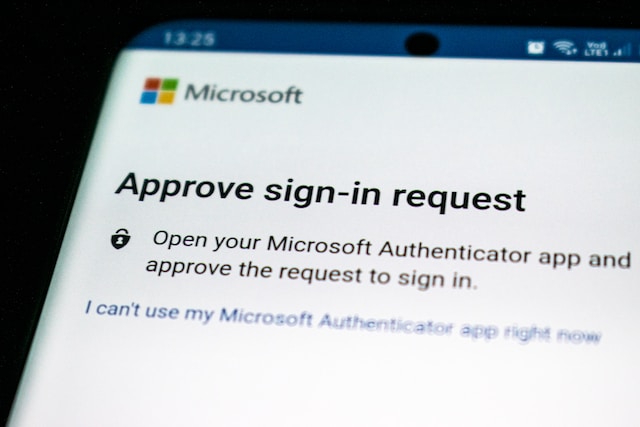Take a moment to think about how much your business relies on technology.
Don’t worry if you’re surprised by just how much you are; most businesses are. Over 99% of businesses use at least one form of technology in their day-to-day operations, but it’s because of this highly integrated way we work that we need to ensure we’re protecting ourselves.
The rise of modern technology has done wonderful things, but it’s also brought an increasing need for robust security measures to protect sensitive data and information.
By taking the time to protect your business, you can ensure technology is serving you properly while minimising the risk of being affected by the dangers.
One such security measure is multi-factor authentication (MFA), a vital tool to enhance the security of your business’s digital assets. In this article, we’ll discuss what MFA is, why it’s essential for companies and the best practices for implementing MFA in 2023.
What is Multi-Factor Authentication?
Multi-factor authentication is a security process that requires users to provide multiple forms of identification before accessing an account or system.
You’ve probably used this yourself when signing into an app or a service. Google services, like Gmail and YouTube, for example, make you sign in with your email and password, and then you have to tap a notification on your phone to ensure it’s you signing into your account.
Most multi-factor authentications work in the same way, typically involving at least two of the following factors: something you know (e.g., a password), something you have (e.g., a hardware token or smartphone), and something you are (e.g., biometric data like fingerprints).
By requiring multiple factors, MFA makes it much more difficult for attackers to gain unauthorised access to your accounts and systems.
Why Should Businesses Use Multi-Factor Authentication?
MFA is essential for businesses due to the increasing prevalence of cyber threats such as phishing attacks, data breaches, and account takeovers.
Imagine if a nefarious individual simply accessed your accounts. They’d be able to see everything you’re up to, what customers you have, where your money goes, all your messages, sales figures, data, and so much more.
And they could do some very real damage with such information.
And at the end of the day, with over 39% of UK businesses being subject to a cybersecurity attack of some kind in 2022 alone, costing the UK over $4 million in 2021, this is something you need to be aware of.
By adding an additional layer of security, MFA significantly reduces the likelihood of unauthorised access to your systems and sensitive data, even if a user’s password is compromised.
This helps you protect your customers, employees, and intellectual property and maintain compliance with industry regulations, such as GDPR and the sorts.
What are the MFA Best Practices You Need to Know?
So, with it clear why having security measures in place is so important, let’s take a deep dive into how you can start using MFA security technology for the best results.
1. Choose an MFA Vendor
Select a reputable MFA vendor that offers a range of authentication methods and is compatible with your business’s systems and applications. Consider factors such as cost, ease of implementation, and user experience when selecting a vendor.
2. Apply MFA to Apps, Accounts, and Systems That Offer the Option
Implement MFA on all apps, accounts, and systems that support it, including email, CRM, and file storage systems. This ensures that all potential entry points are secured.
3. Use Different Types of MFA
There are various types of MFA methods available, and it’s essential to use a mix of these to provide the best security for your business. Some common types include:
- Email OTP (One-Time Password): Users receive a temporary password via email that must be entered alongside their regular password.
- Email Linking: Users receive an email with a link that they must click to confirm their identity.
- SMS OTP: A temporary password is sent to the user’s mobile phone via SMS.
- Phone Call: The user receives a phone call and must enter a code displayed on their screen.
- Biometric: Authentication is done through fingerprint, facial recognition, or other biometric methods.
- Hardware Token: Users have a physical device that generates a one-time password.
- Soft Tokens: Software-based tokens generate one-time passwords on a user’s device.
- Push Notifications: Users receive a push notification on their smartphone and must approve the login attempt.
4. Educate Staff
Ensure your employees understand the importance of MFA and how to use it correctly. Offer training sessions and provide resources to help them navigate the MFA process.
5. Use MFA in Line with Single Sign-On (SSO)
SSO allows users to access multiple applications with a single set of login credentials, simplifying the login process. Combining SSO with MFA provides both convenience and security.
What are the Benefits of MFA?
Bringing it all together, implementing MFA will bring several benefits to your business. These are benefits like;
- Enhanced Security: MFA provides an additional layer of security, reducing the likelihood of unauthorised access to your systems and data.
- Compliance: MFA helps businesses comply with industry regulations and standards, such as GDPR and HIPAA.
- Improved Customer Trust: By demonstrating a commitment to security through implementing MFA, your business can build trust with customers and clients, reassuring them that their data is safe.
- Reduced Risk of Data Breaches: Implementing MFA can help to protect your business from data breaches, minimising the potential financial and reputational damage associated with such incidents.
- Lowered Instances of Account Takeovers: MFA makes it more difficult for cybercriminals to take over user accounts, reducing the risk of unauthorised access and fraudulent activities.
Conclusion
As the digital landscape evolves, businesses must proactively protect their sensitive data and systems.
Implementing multi-factor authentication is an essential component of a robust cybersecurity strategy, providing an additional layer of security to safeguard your business against cyber threats.
By following the best practices outlined in this article, you can effectively integrate MFA into your business operations and enhance the overall security of your digital assets.





